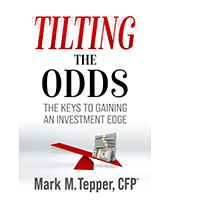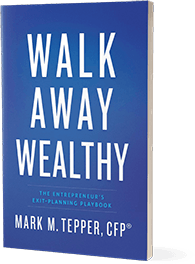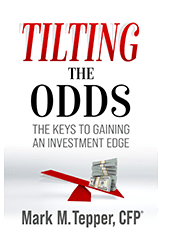Narrative Driven Investing
So far this year, the market has done better than expected, due almost exclusively to excitement in AI. Honestly, we’ve seen this movie before.
Let’s go in the WABAC machine (anyone else remember Mr. Peabody and Sherman?) all the way to… 2021. Back then, the narrative could be summed up in ‘crypto fixes that.’ The idea then was that crypto would lead us to a new land of plenty, at least for early adopters. I do think crypto is a very interesting idea, but I have yet to see any implementation of it that has really wowed. If anything, arguably, I’ve seen holes in the original idea.
Now, we have AI, which will lead us to a new land. We see the hockey stick projections, the breathless excitement. Heck, we even have the same stock participating, Nvidia. Back then, we had guidance and claims of an amazing future. Ultimately, some of that played out. Great, but not for the shareholders who got to wear a roughly 70% decline when revenue growth eventually turned negative. Is AI a better narrative than crypto? At 41x Price/Sales, I sure hope so.

This blog isn’t really about NVidia or AI, though. It’s about how to invest. I’m a massive fan of having a solid system in place for investing and not changing it just because something didn’t go your way. We’re underperforming the market because we didn’t sufficiently participate in the AI surge. Should we rush out and buy NVDA to show we own it, so people see we’re ‘there’ at quarter-end?
Instead of chasing a narrative, particularly one that lacks a clear and immediate path to cash flow, I focus on where we are with inflation, the economy, and policy. When inflation and the economy are both going down at the same time, you get negative outcomes for the stock market. With policy, when liquidity is shrinking, nothing else matters, you get bad outcomes. Right now, inflation, growth, and liquidity all show negative growth. It’s hard for me to get very excited about investing aggressively when warning klaxons are sounding.
Of course, that doesn’t mean you can’t get bear market rallies. Bear markets are brutal for bulls and bears, alike. Its job is essentially shake you down, beat you up, and make you want to foreswear aggressive investing. Let’s look at 2000:

It’s easy sit in your armchair, look to the past, and not sweat a 35% rally, or a 45% rally. Didn’t they know there were still problems? No, they didn’t. I certainly remember that summer 2000 rally, where the attitude seemed to be that while the junk dot com stocks were history, companies like Cisco were going to keep humming along. The Nasdaq went up 35% but that changed in October, when Cisco warned. Apparently junk dot com customers were a lot of their business.
The point is bear market rallies happen. You can make a lot of money, but you can also get killed. A lot of people got bulled up in the summer of 2000, and somebody had to wear that loss. In my opinion Bear market rallies are great to catch, but you’re playing with fire. Tread carefully.
What if we already had the bad news? The bottom was last summer and it’s blue sky ahead? That would be ignoring a host of problems. It’s highly varied, but the general claim is it takes 18 months for rate policy to take effect. If that’s the case, we’ve hardly seen anything yet. Every day we live with higher rates, someone has to roll debt at a much higher level, or accept a smaller house, or whatever. That all takes time, much to the disappointment of a hyper stock market.
Yes, some big banks are reducing their recession probabilities because they thought a recession should have happened in the first quarter. I’ve long been saying a recession wasn’t likely to hit until the back half of this year, a probability which I’m only more confident of, now. That’s what leading indicators and yield curves have been saying for a while, and the fact that student loan payments are starting back up in October only solidifies the idea. Not to mention loan growth sharply slowing, jobless claims and bad debt rising, and WARN notices (notification of mass layoffs) soaring.
What if, by chance, we do manage to avoid a recession, anyway? With a huge federal deficit and sticky Core CPI, we sure wouldn’t expect the Fed to cut rates anytime soon. It seems like the Fed views current rates as roughly neutral. Higher for longer rates would likely be the reality. Banks, and the market, have been slow to fully price in high rates held there for a long time, thinking and hoping the Fed relents. Presumably, a reckoning would have to happen.
OK, so a recession is very likely and big tech seems questionable after the huge run. What about the value stocks that have been left behind, this year? The chart below, for instance, shows they’re reasonably valued vs. history. Is there an opportunity in discarded value stocks?

I have to admit, that’s a tougher call. Chances are that there is some amount of opportunity there. The question, to me, is how good that opportunity is. I tend to think that while value stocks are generally much more attractive than growth stocks, right now, the set of value stocks that offer good risk/reward probably isn’t huge, yet.
There are a variety of reasons for that. First, short-term rates give you about a 5% return. That’s very attractive vs. the above history and should work to lower P/Es of companies. Second, the graph above shows forward P/Es. Those are always unknown and are often too optimistic, particularly when a recession hits the numbers. That may not be an issue for several months but is likely to be an issue down the road. Third, there are some stressed value areas out there, right now. Stress can be an opportunity, but with recession risk, it’s playing with fire. For instance, bank estimates are coming down rapidly as loan growth shrinks fast and deposit costs soar. Until that stabilizes, that’s a tough falling knife to catch. Energy is another one where their forward estimates can, and have, changed rapidly. It’s hard to know just what you’re buying, particularly in front of a likely recession.
In summary, a recession is likely, if quite possibly several months away. Some have taken this break in the action to chase the latest narrative, something we haven’t participated in as much as the market has. That’s unfortunate, but the long-term, big-picture environment remains tough. Some investors are enjoying the latest AI bubble, but at some point, they risk ending up like China investors at the start of the year, crypto investors in 2021, dot com investors in 2000, or many other examples. Those can be good ideas, by the way, but the price you pay matters. If the price assumes exponential growth that doesn’t quite pan out, somebody has to wear that realization on their returns. Narrative-based investing can look and feel good for a while but can often leave investors with losses.
 Enter your information below, and we will email you our new eBook, Tilting the Odds
Enter your information below, and we will email you our new eBook, Tilting the Odds




